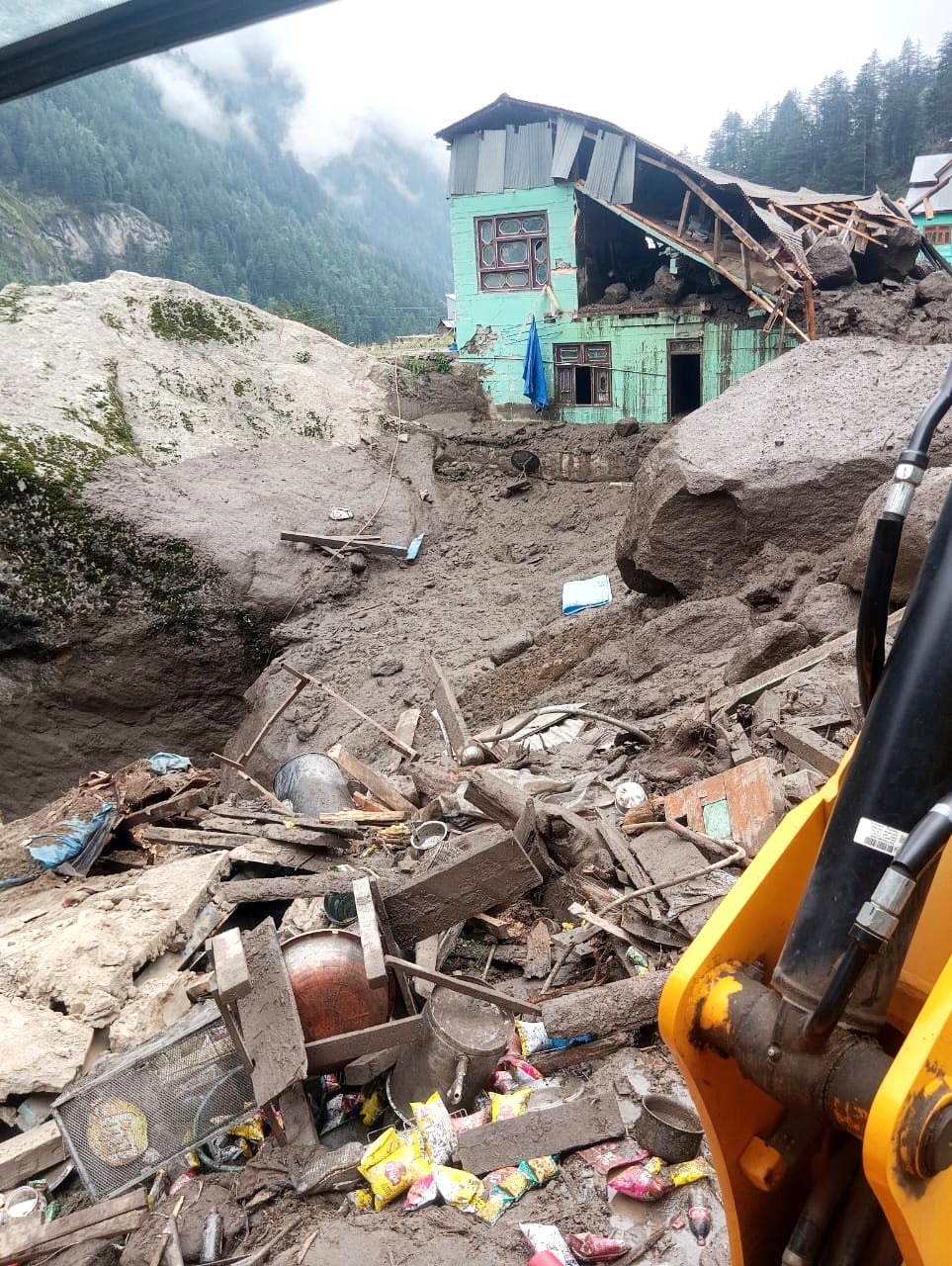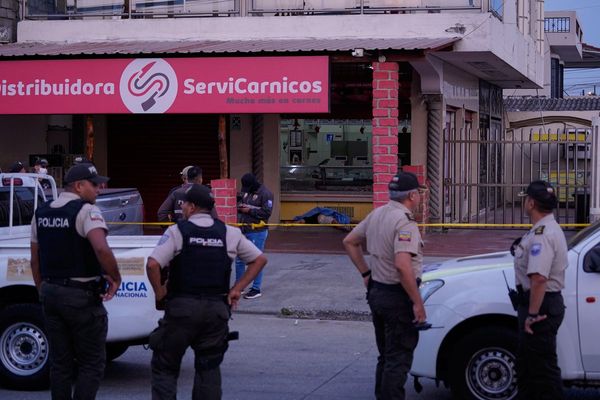At least 56 people are feared dead in a flash flood triggered by sudden heavy rain that devastated a remote village in the restive Himalayan region of India-administered Kashmir.
Rescuers are racing against time to find at least 80 people who are still missing a day after the disaster struck Chasoti village, a pitstop on a popular Hindu pilgrimage route in Kishtwar district. Officials reportedly said they brought about 300 people to safety following the flash flood.
Chashoti is where pilgrims leave their vehicles and set out on foot to the Machail Mata temple, located at an elevation of 2,800m.
“The news is grim and accurate, verified information from the area hit by the cloudburst is slow in arriving,” Jammu and Kashmir chief minister Omar Abdullah said.
Federal deputy minister for science and technology, Jitendra Singh, said the flood was triggered by a cloudburst and "could result in substantial casualties".
He said rescue teams were finding it hard to reach the village due to bad weather. The flood washed away a road and the weather wasn’t helicopter-worthy, he said.

Susheel Kumar Sharma, a government official, said villagers and local public workers recovered the bodies, while at least 50 seriously injured people were rushed to local hospitals for treatment. He said people went missing as the flood swept away dozens of cars and motorbikes.
TV footage showed pilgrims crying in fear as floodwaters inundated the village. Villagers said the flood also washed away makeshift shops and community kitchens set up for the pilgrims.
Officials said that the pilgrimage had been suspended and more rescue teams have been pressed to strengthen rescue and relief operations. The pilgrimage began on 25 July and was scheduled to end on 5 September.
Abdul Majeed Bichoo, a resident and a social activist from a neighbouring village, said that he witnessed the bodies of eight people being pulled out from under the mud.
Three horses, which were also completely buried alongside them under debris, were "miraculously recovered alive," he told the Associated Press. He added that Chasoti village had become a "sight of complete devastation from all sides" following the disaster.
"It was heartbreaking and an unbearable sight. I have not seen this kind of destruction of life and property in my life," he said.
On Friday, earth-movers were brought to the site of the disaster to move giant boulders, uprooted trees, and electricity poles, in an effort to expedite the rescue operation.
Lieutenant governor Manoj Sinha, the top administrator of Kashmir appointed by New Delhi, offered condolences for the loss of life in the disaster and said he had directed personnel from India's military, paramilitary, police and disaster management agencies to strengthen rescue and relief operations.
Narendra Modi said "the situation is being monitored closely". "Rescue and relief operations are underway. Every possible assistance will be provided to those in need," the prime minister said on X.
A cloudburst, according to the Indian Meteorological Department, is an intense downpour of over 100mm of rain in just an hour that can trigger floods and landslides, especially in mountainous areas.
Cloudbursts are increasingly common in India's Himalayan regions, which are prone to flash floods and landslides. Kishtwar is home to multiple hydroelectric power projects, which experts have long warned pose a threat to the region's fragile ecosystem.
US warns India could face higher tariffs if Trump-Putin talks fail
Gym trainers accused of beating man to death after protein supplement shop argument
Backlash after local authorities in India ban meat sales on Independence Day
India unveils plans to use cow dung as fuel for vehicles
How a court’s ruling ripped open India’s decades-old debate over stray dogs
India’s poll body faces scrutiny as voter list anomalies prompt ‘vote theft’ charges







